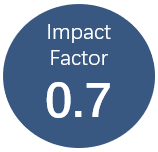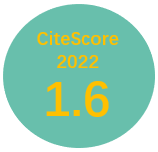Impact of infrastructure on tax revenue: Case study of high-speed train in Japan
Vol 1, Issue 2, 2017
VIEWS - 1984 (Abstract) 1150 (PDF)
Abstract
This study analyzes the impact of a high-speed rail line on tax revenues and on the economy of affected regions within the country. The economic impact of infrastructure investment can be induced by changes in tax revenues when the infrastructure is in operation. Accurate regional GDP data are not necessarily available in many Asian countries. However, tax data can be collected. Therefore, this study uses tax revenue dates in order to estimate spillover effects of infrastructure investment. The Kyushu high-speed rail line was constructed in 1991 and was completed in 2003. In 2004, the rail line started operating from Kagoshima to Kumamoto. The entire line was opened in 2011. We estimated its impact in the Kyushu region of Japan by using the differencein- difference method, and compared the tax revenues of regions along the high-speed railway line with other regions that were not affected by the railway line. Our findings show a positive impact on the region’s tax revenue following the connection of the Kyushu rapid train with large cities, such as Osaka and Tokyo. Tax revenue in the region significantly increased during construction in 1991–2003, and dropped after the start of operations in 2004–2010. The rapid train’s impact on the neighboring prefectures of Kyushu is positive. However, in 2004–2013, its impact on tax revenue in places farther from the rapid train was observed to be lower. When the Kyushu railway line was connected to the existing high-speed railway line of Sanyo, the situation changed. The study finds statistically significant and economically growing impact on tax revenue after it was completed and connected to other large cities, such as Osaka and Tokyo. Tax revenues in the regions close to the high-speed train is higher than in adjacent regions. The difference-in-difference coefficient methods reveal that corporate tax revenue was lower than personal income tax revenue during construction. However, the difference in corporate tax revenues rose after connectivity with large cities was completed. Public–private partnership (PPP) has been promoted in many Asian countries. However, PPP-infrastructure in India failed in many cases due to the low rate of return from infrastructure investment. This study shows that an increase of tax revenues is significant in the case of the Kyushu rapid train in Japan. If half of the incremental tax revenues were returned to private investors in infrastructure, the rate of return from infrastructure investment would significantly rise for long period of time. It would attract stable and long-term private investors, such as pension funds and insurance funds into infrastructure investment. The last section of the paper will address how incremental tax revenues created by the spillover effects of infrastructure will improve the performance of private investors in infrastructure investment.
Keywords
Full Text:
PDFReferences
Ando M and Kimura F (2013). “Production linkage of Asia and Europe via central and Eastern Europe”. Journal of Economic Integration, 28(2): 204–240. doi: 10.11130/jei.2013.28.2.204.
Arslanalp S, Barnharst F, Gupta S, et al. (2010). “Public capital and growth”. International Monetary Fund Working Paper No. 175. Washington, DC, USA: International Monetary Fund.
Aschauer DA (1989). “Is public capital productive?”. Journal of Monetary Economics, 23(2): 177–200. doi: 10.1.1.215.7783.
Banerjee AV and Duflo E (2009). “The experimental approach to development economics”. Annual Review of Economics, 1: 151–178. doi: 10.1146/annurev.economics.050708.143235.
Belloc M and Vertova P (2006). “Public investment and economic performance in highly indebted poor countries: An empirical assessment”. International Review of Applied Economics, 20(2): 151–170. doi: 10.1080/02692170600581086.
Bertrand M, Duflo E and Mullainathan S (2004). “How much should we trust differences-in-differences estimates?” The Quarterly Journal of Economics, 119(1): 249–275. doi: 10.1162/003355304772839588.
Cohen JP and Paul CJM (2004). “Public infrastructure investment, interstate spatial spillovers and manufacturing costs”. The Review of Economics and Statistics, 86(2): 551–560. doi: 10.1162/003465304323031102.
Donaldson D (2010). “Railroads of the Raj: Estimating the impact of transportation infrastructure”. American Economic Review. (In Press). doi: 10.3386/w16487.
Duflo E, Glennerster R and Kremer M (2008). “Using randomization in development economics research: A toolkit”. 1st ed. In: Schultz T and Strauss J (eds). Handbook of Development Economics, Vol. 4. Amsterdam, Holland: Elsevier North Holland. p. 3895–3962.
Eisner R (1994). “Real government saving and the future”. Journal of Economic Behavior & Organization, 23(2): 111–126. doi: 10.1016/0167-2681(94)90062-0.
Everaert G (2003). “Balanced growth and public capital: An empirical analysis with I(2) trends in capital stock data”. Economic Modelling, 20(4): 741–763. doi: 10.1016/S0264-9993(02)00006-8.
Faber B (2014). “Trade integration, market size and industrialization: Evidence from China’s national trunk highway system”. The Review of Economic Studies, 81(3): 1046–1070. doi: 10.1093/restud/rdu010.
Gonzalez-Navarro M and Quintana-Domeque C (2010). “Street pavement: Results from an infrastructure experiment in Mexico”. Working Paper 556. Princeton, NJ, USA; Princeton University, Department of Economics, Industrial Relations Section.
Harmatuck D (1996). “The influence of transportation infrastructure on economic development”. Transportation Research Part E: Logistics and Transportation Review, 32(1): 63–76.
Hulten CR and Schwab RM (1991). “Public capital formation and the growth of regional manufacturing industries”. National Tax Journal, 44(4): 121–134.
Japan External Trade Organization. “Laws & regulations on setting up business in Japan”. https://www.jetro.go.jp/en/invest/setting_up/laws/.
Fujii N (2013). An overview of Japan’s high-speed railway: Shinkansen. Ministry of Land, Infrastructure, Transport and Tourism (MLIT) Presentation. http://www.jterc.or.jp/english/kokusai/conferences/pdf/130211-mlit-presentation.pdf.
Moreno R, López-Bazo E and Artís M (2003). “On the effectiveness of private and public capital”. Applied Economics, 35(6): 727–740. doi: 10.1080/1350485032000066043.
Nakahigashi M and Yoshino N (2016). “Changes in economic effect of infrastructure and financing methods”. Public Policy Review, 12(1): 47–68.
National Tax Agency of Japan. https://www.nta.go.jp/.
Pereira AM and Andraz JM (2003). “On the impact of public investment on the performance of US industries”. Public Finance Review, 31(1): 66–90. doi: 10.1177/1091142102239135.
______ (2005). “Public investment in transportation infrastructures and economic performance in Portugal”. Review of Development Economics, 9(2): 177–196. doi: 10.1111/j.1467-9361.2005.00271.x.
______ (2012). “On the economic and budgetary effects of investments in Scuts – the Portuguese toll free highways”. The Annals of Regional Science, 48(1): 321–338. doi: 10.1007/s00168-010-0404-6.
______ (2013). “On the economic effects of public infrastructure investment: A survey of the international evidence”. Journal of Economic Development, 38(4): 1–37.
Pereira AM and Roca-Sagales O (2007). “Public infrastructure and regional asymmetries in Spain”. Revued’Économie Régionale et Urbaine, 3: 503–520. doi: 10.3917/reru.073.0503.
Ravallion M (2009). “The evaluation in the practice of development”. The World Bank Research Observer, 24(1): 29–53. doi: 10.1093/wbro/lkp002.
Rodrik D (2008). “The new development economics: We shall experiment but how shall we learn?” HKS Working Paper RWP 08-055. Cambridge, MA, USA: John F. Kennedy School of Government, Harvard University.
Seung C and Kraybill D (2001). “The effects of infrastructure investment: A two sector dynamic computable general equilibrium analysis for Ohio”. International Regional Science Review, 24(2): 261–281. doi: 10.1177/016001701761013150.
Stephan A (2003). “Assessing the contribution of public capital to private production: Evidence from the German manufacturing sector”. International Review of Applied Economics, 17(4): 399–417. doi: 10.1080/0269217032000118747.
Yoshino N and Abidhadjaev U (2015). “Infrastructure investment impact evaluation: Case of Uzbekistan. Effective use of social-economic potential and attraction of new sources of economic growth”. Tashkent, Uzbekistan: Proceedings from VI Forum of Economists.
______ (2016). “Explicit and implicit analysis of infrastructure investment: Theoretical framework and empirical evidence”. American Journal of Economics, 6(4): 189–199. doi: 10.5923/j.economics.20160604.02.
______ (2017). “An impact evaluation of investment infrastructure: The case of a railway connection in Uzbekistan”. Journal of Asian Economics, 49: 1–11. doi: 10.1016/j.asieco.2017.02.001.
Yoshino N and Nakahigashi M (2000). “Economic effects of infrastructure: Japan’s experience after World War II”. JBIC Review, 3: 3–19.
Yoshino N and Pontines V (2015). “The ‘highway effect’ on public finance: Case of the Star Highway in the Philippines”. ADBI Working Paper 549. doi: 10.2139/ssrn.2697322.
DOI: https://doi.org/10.24294/jipd.v1i2.69
Refbacks
- There are currently no refbacks.
Copyright (c) 2017 Naoyuki Yoshino, Umid Abidhadjaev

This work is licensed under a Creative Commons Attribution-NonCommercial 4.0 International License.

This site is licensed under a Creative Commons Attribution 4.0 International License.










